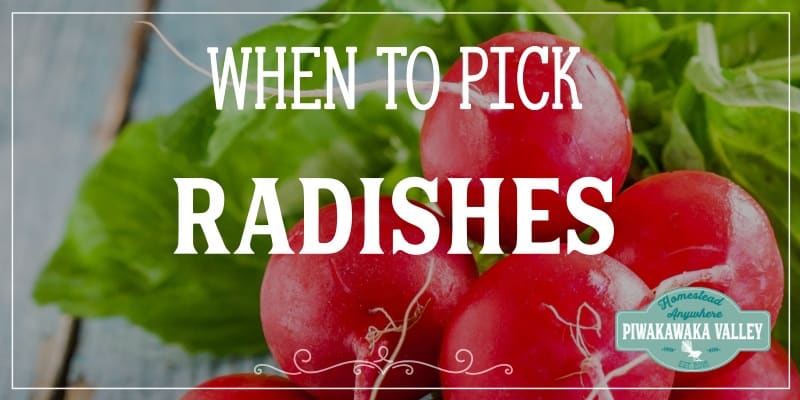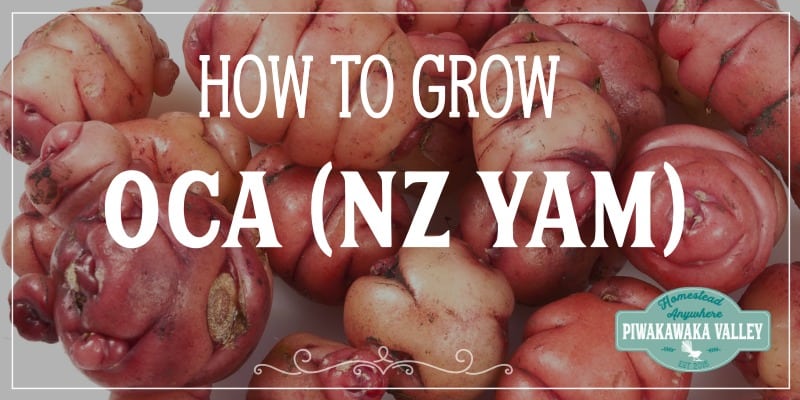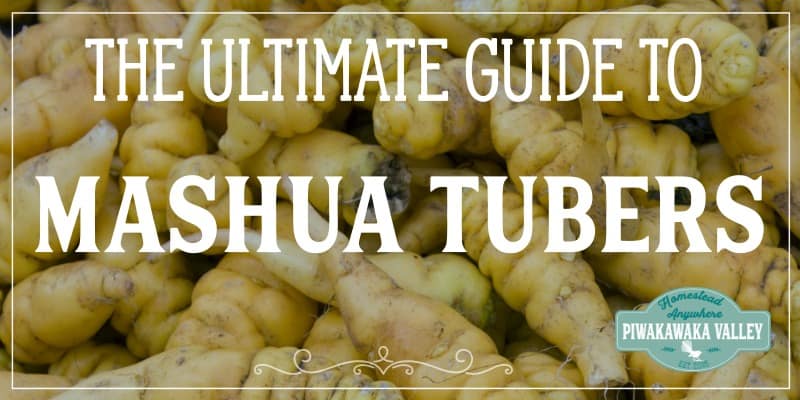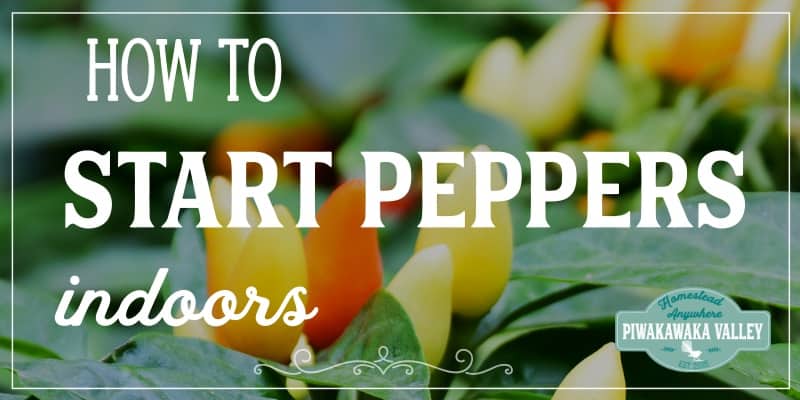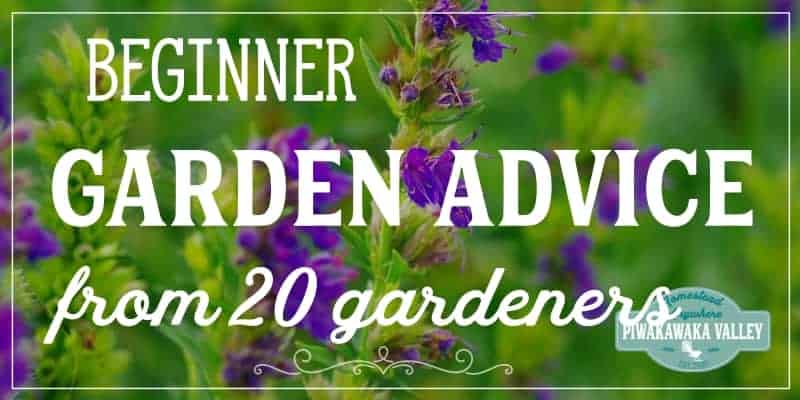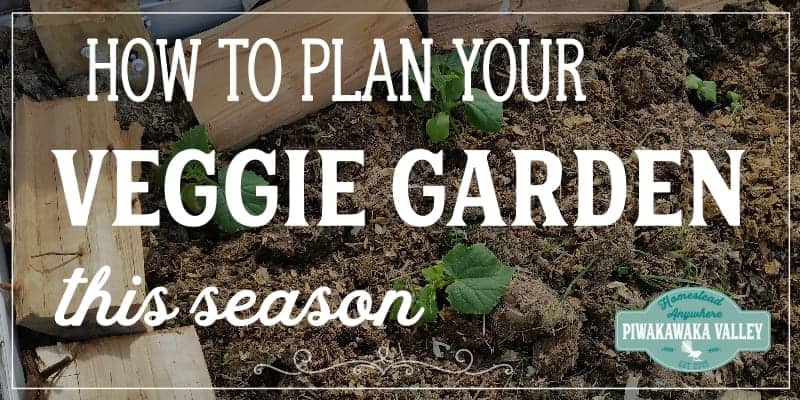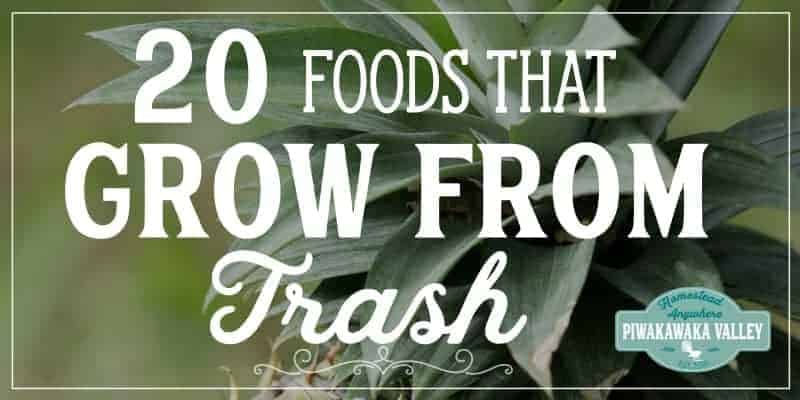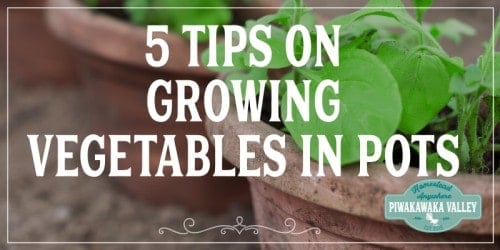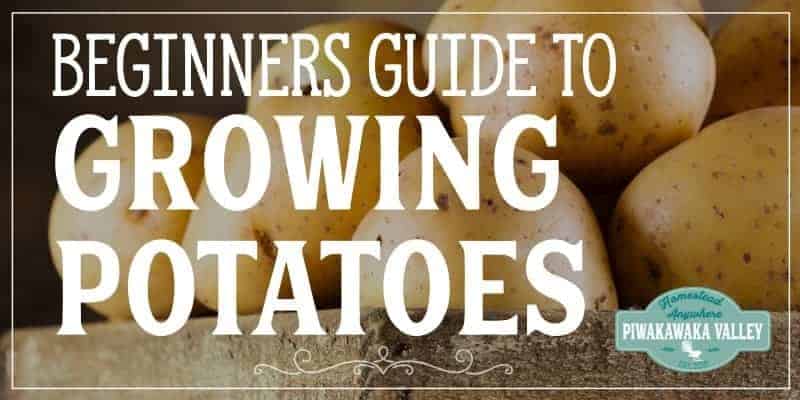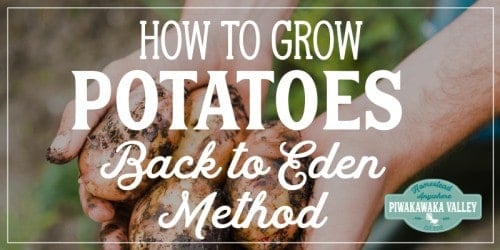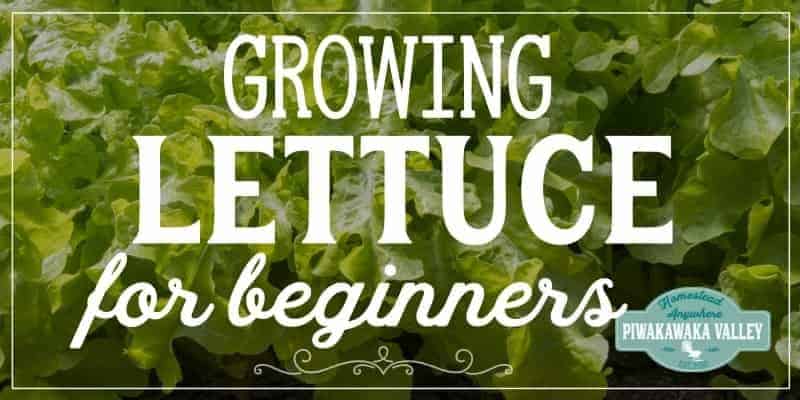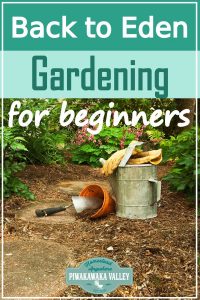This post was most recently updated on December 21st, 2021
What is Back to Eden Gardening and what can it do for your vegetable garden? In this article we will show you everything you need to know to build a back to Eden garden in your backyard.
Please read: This information is provided for educational purposes only and is not intended to treat, diagnose or prevent any disease. We encourage you to make your own health care decisions in partnership with a qualified health care professional.
This post contains affiliate links, this means at no extra cost to you, we make a commission from sales. Please read our Disclosure Statement
Back to Eden gardening method has totally revolutionized my gardening practices. This is how we grew all our family’s vegetables without weeding or watering at all! These days I barely weed the garden, I pretty much never water the garden either, and it is more productive now then it has ever been.
Organic gardening has its challenges, and Back to Eden gardening (BTE) solves many of these issues with one simple step.
What is Back to Eden Gardening?
Back to Eden gardening is an idea thought up by Paul Gautschi, and it just makes so much biological sense. It uses wood chip mulch to regenerate the soil and to mimic the forest floor.
Using natures own methods, we can quickly rebuild topsoil, grow healthy plants and support all the natural bugs and insects as well as the microbiota that keep our soil healthy and alive.
The secret to the BTE gardening method is the wood mulch that it uses. This is an easy organic way to add organic matter to the soil without needing to add additional manure or amendments.
Wood mulch that you get from an arborist (often for free!) is a mixture between shredded sticks and leaves. It works out at almost exactly the 30/70 ratio of greens to browns that makes perfect compost.
This wood mulch sits on the top of the soil and breaks down slowly. All the while it feeds the plants and retains moisture perfectly – just like a forest floor.
Is Eden Gardening just Mulching with Woodchips?
No, it isn’t that simple sadly. There are different types of wood chips, and for Eden Gardening, you want to be using what is called wood mulch – where the leaves, twiges, bark and wood are all chopped together in different sizes. You do not want to use saw dust, wood shavings or just bark chips as these are all too high in carbon with no nitrogen so they will take forever to breakdown.
It’s all about keeping moisture in the soil and the hot sun and winds out. Some great covering options if wood mulch chips aren’t available include grass clippings, leaves, animal manures, straw or spent hay.
What is the best woodchips to use for Back to Eden Gardening?
Most soft or hardwood woodchips will work in a Back to Eden Garden. Ramial woodchips (also known as wood mulch or arborist mulch) are the best, and are usually very cheap or free.
Ramial chipped wood (RCW), also called BRF (from the French name, bois raméal fragmenté, “chipped branch-wood”). These are a type of woodchips made solely from small to medium-sized branches, usually as a scrap from forestry or from arborist work.
RCW consists of the twigs and branches of trees and woody shrubs, preferably deciduous, including small limbs up to 7 cm. (3 in.) in diameter. It is processed into small pieces by chipping in a large machine, and the resulting product has a relatively high ratio of green to brown compared to other chipped wood products. Because of this, it is higher in nutrients and faster to become balanced compost.
It is an effective promoter of the growth of soil fungi and of soil-building in general. The goal is to develop an airy and spongy soil that holds an ideal amount of water and resists evaporation and compaction, while containing a long-term source of fertility.
The actual species of plant that it is made of is less important than the shape of the chips and the parts of the plant that it is made with.
Also, there are a few trees that you DO NOT want to use – eucalyptus (we found that out the hard way!) and walnut will both hinder the growth of anything you mulch with them for the first year. After a year or so, they will have released the chemicals that stop other plants growing and you will be fine. If you have chips from them, you are best to make their own compost pile and allow them to breakdown on their own.
Benefits of a Back to Eden Garden
The aim of a BTE garden is to be no-till, no-watering and minimal maintenance. Back to Eden gardening method is all about recreating the environment in which plants already thrive in nature. There are several benefits to this gardening method including:
Less watering
A covered soil will have less evaporation, and more liquid retention. The wood acts as both a sponge and a buffer. Soaking up extra liquid to release it later, while keeping the hot sun off of the soil.
A BTE garden needs very little, if any external watering.
Less weeds
Mother Earth does not like to be naked, bare soil will quickly regrow weeds to protect the soil from erosion and nutrient depletion. Covering the soil with a mulch layer adds these benefits, while building top soil, feeding the soil food web while avoiding all the weed growth.
The mulch layer smothers out the weed seeds meaning they are never close enough to the surface to sprout and grow.
Healthier plants and healthy soil
Plants grow beautifully in an established Back to Eden garden, many of mine grow so much better now then they ever have. With a strong soil food web, a constant supply of nutrients and less soil disturbance, plants thrive in this system once it is established.
To achieve this you need plenty of wood mulch, with a new layer each year for a first few years. As this breaks down it will start to build a rich soil underneath the mulch layer.
Nitrogen Cycles in Back to Eden Gardens
One complaint many have with the concept of Eden Gardens is that too much carbon matter will rob the soil of nitrogen.
This is not the case when BTE gardens are done correctly.
- You need to use mulching material that contains some nitrogen
- You lay the material on top of the surface, not mix it in to the soil
- You plant and sow into the soil below the mulch.
- A thick layer of organic compost under the first layer of mulch will speed up the maturity process and supply plenty of nutrients to you plants to last until the mulch starts to breakdown too.
These three steps will ensure that your nitrogen stays in the soil where it belongs. As the mulch breaks down it will also slowly add more nitrogen to the soil.
If you mix wood chips into your soil, it certainly will lock up the nitrogen in the soil.
Downside to Back to Eden Gardening
The first year of swapping to a BTE garden, you may find that your plants do slightly worse than normal if you set it up too late in the season.
This is because as wood breaks down, it absorbs nitrogen from the air and soil around it for the decomposition. Once the decomposition is complete, it will release the borrowed nitrogen plus so much more back to the soil.
There are a couple of ways of mitigating this effect.
- Put a layer of compost or manure down first, organic material that is already somewhat broken down will continue to do so and can heat up, so it is best to use mature compost or manure that is well broken down.
- DO NOT mix the wood mulch in to the soil, only leave it on the surface
- Water your plant with a nitrogen rich liquid tea (diluted appropriately) weekly until the nitrogen cycle is established, seaweed tea, manure tea or worm tea are all good options
Both of these steps will minimize the lack of available nitrogen in the first year while the system starts to mature.
When is the Best Time to Start a Back to Eden Garden?
The ideal answer is last Fall, this would have given the mulch some time to start breaking down and start building your soil food web.
However, all is not lost. You can start your BTE garden whenever you like.
If you are starting in the Spring, be sure to add a layer of compost under the wood mulch to feed your soil, and this will kickstart the breakdown of the wood chips as well.
Always be sure to plant in to the compost or soil rather than in to the wood chips.
How to start a Back to Eden Garden in your backyard
This gardening technique is easy once you know how, here are some key things you should know about starting a Eden Garden in your backyard.
1. Position
Ideally, your new garden will be in full sun, or at least get 8 hours of sun per day.
Choose a spot that is easy to get to from the house, as well as easy to either bring a dump truck to, or at least wheelbarrow access.
Shelter from the prevailing wind is also a bonus.
Because you build this garden upwards, it doesn’t matter so much what the soil underneath currently looks like.
2. Create a base layer
This is the time for soil preparation. If you have weeds where you want to put your garden bed, I suggest that you cover the ground in a very thick layer of news paper (non shiny stuff) or cardboard from boxes.
Mark out the edges of the garden with a string or a hose or something, so you know where you are aiming to fill.
Flatten out corrugated cardboard boxes, removing all the tape as you go. Make the layer at least 2 layers of cardboard thick. This will stop the weeds growing through.
3. Compost
Now comes a thick layer of well rotted compost, and/or manure and bedding. You want at least 4 inches (10cm) of compost over the whole bed. It will compact quite a lot (down to about 1/3 of what you started with), so do more rather than less.
4. Wood mulch
Now comes the magic layer. If you ring your local council, you may be able to get their wood mulch from caring for the city’s trees for free. You will need somewhere that they can back up and drop off a whole truck load at once.
Otherwise try arborists in your neighborhood – here they sell it, but it is pretty cheap when you buy it by the truckload.
What you DON’T want is lumber yard sawdust from treated wood. It needs to have the bark, wood and leaves all shredded together. It is this balance that is key to allowing it to breakdown and feed the soil properly.
Put your wood mulch in a layer that is 6-8 inches thick for the first year. After that you will need to add 4 inches a year for the next few years, then you can go down to 2-3 inches a year as maintenance.
The good thing is though, that you will not need to buy expensive organic compost or add manure to this garden again, the wood mulch does it all.
Tips for starting your Back to Eden garden
- Don’t let your new bed dry out during construction, try and get it finished within one or two days. Once compost is dry it is very hard to get wet again without using a huge amount of water.
- Ideally build your bed when you are expecting some rain. Rain will soak in to your beds and the moisture will give it a head start.
- Hunt around for your resources, I found one place selling mulch for THREE TIMES the amount we ended up paying for it.
- Build your beds in Autumn/Fall and let them settle and soak over the Winter if you can. While Spring beds will totally work, I have had better success the first season if the beds have had the Winter to break in first.
How to plant in a Back to Eden garden
Once your garden is set up, it is best to plant out seedlings rather than sow from seed for the first year, with the exception of big seeds like peas and beans .
To plant a seedling, you need to part the mulch and plant the transplant right down in the compost below. As the plant gets bigger you can push the pulled back mulch back in to place.
How to sow seeds in BTE gardening
A study in Florida directly compared the ability of different wood mulches to suppress lettuce seed germination.
Surprisingly, the scientists found that all the fresh mulches suppressed seed germination; however, after six to nine months, all of the suppressive properties were gone.
After the first year, you will have an amazing layer of soil forming under the top layer of mulch. To sow fine seeds, you will need to pull the mulch back to expose the lovely soil underneath.
This is where you need to plant your seeds . As the plants grow, you can push the mulch back around the plants.
Seeds sown in to the top layer of wood mulch only will not germinate, and those that do will wilt when their roots cannot reach the moist compost layer underneath.
Maintenance of a Back to Eden garden
There is very little that needs to be done. If you find stray weeds, pull them out and leave them on the surface, they will quickly dry out and die. Then nature will add it to your garden’s compost as it decomposes.
Seeds or seedlings may need watered when they first go in, but generally gardens that are this well mulched and with so much organic matter will seldom need real watering.
Once a year you will need to top up your mulch layer with more wood mulch. But there is no tilling and very minimal weeking involved.
You can watch the original documentary here.
If you would like help getting the most out of your garden, I would love to help you, find out more here
Back to Eden garden raised beds
You can successfully use the back to Eden method in your raised beds as well. Make sure you establish your beds with at least 4 inches of compost or good quality garden soil, then add your wood mulch on to the top. Leave a little space (about 1-2 inches) between the top of the mulch and the top railing of your garden bed to stop the mulch sliding off into your pathways. This is a really great way to reduce the number of weeds in your vegetable garden!
Can you do back to Eden garden with leaves
Yes, you can. Leaves do break down much faster than woodmulch, so you will likely need to top it up more often to avoid weeds becoming established.
The other thing to be aware of with using leaves instead of wood mulch is that leaves can tend to clump and mat together which can cause a slimy mess, or repel the water.
To reduce the risks and balance the mix, add a little bark mulch, pine needles or small sticks to the leaves to help create air pockets and water drainage tunnels.
Can you grow cover crops in a BTE garden?
Yes, you can. However, cover crops are usually used as a ground cover over winter and to create carbon and nitrogen material to add to the soil. The BTE garden method does these things naturally, without the added need of cover crops, green manure or ground cover plants.
If you do choose to do this, you can simply pull out the plants and leave them on the surface to breakdown, or you can remove them and place them in your compost bin, or you can use them to feed your chickens or rabbits.
Watch the Back to Eden Garden documentary
If you would like to watch the back to eden garden documentary for yourself you can find it on youtube, or watch it below:
You can watch the original documentary here.
If you would like help getting the most out of your garden, I would love to help you, find out more here
RELATED: Free Gardening Resources
If you like tips on frugal living, self sufficiency and consuming less, sign up to our newsletter below, I would LOVE to have you
For further reading, I also recommend all of these books. I own every one of them and they are amazing resources!






